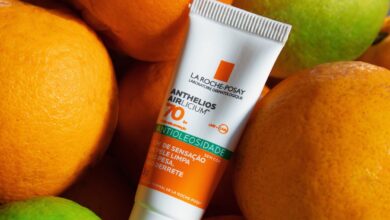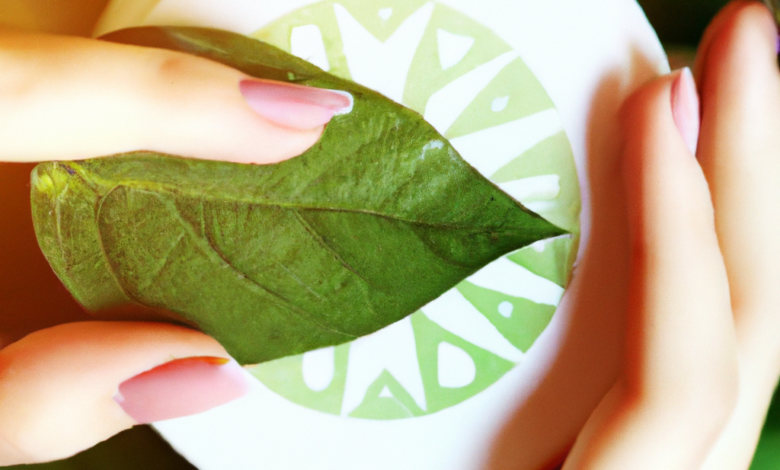
In the world of skincare, there is an increasing focus on sustainability and the adoption of eco-friendly practices. As consumers become more conscious of the environmental impact of their choices, the demand for sustainable packaging in skincare products has surged. Brands are now leading the charge towards eco-friendly packaging solutions, recognizing the importance of minimizing waste and reducing their carbon footprint. In this article, we will explore the growing trend of sustainable packaging in the skincare industry and examine how brands are taking innovative approaches to fulfill their environmental responsibilities.
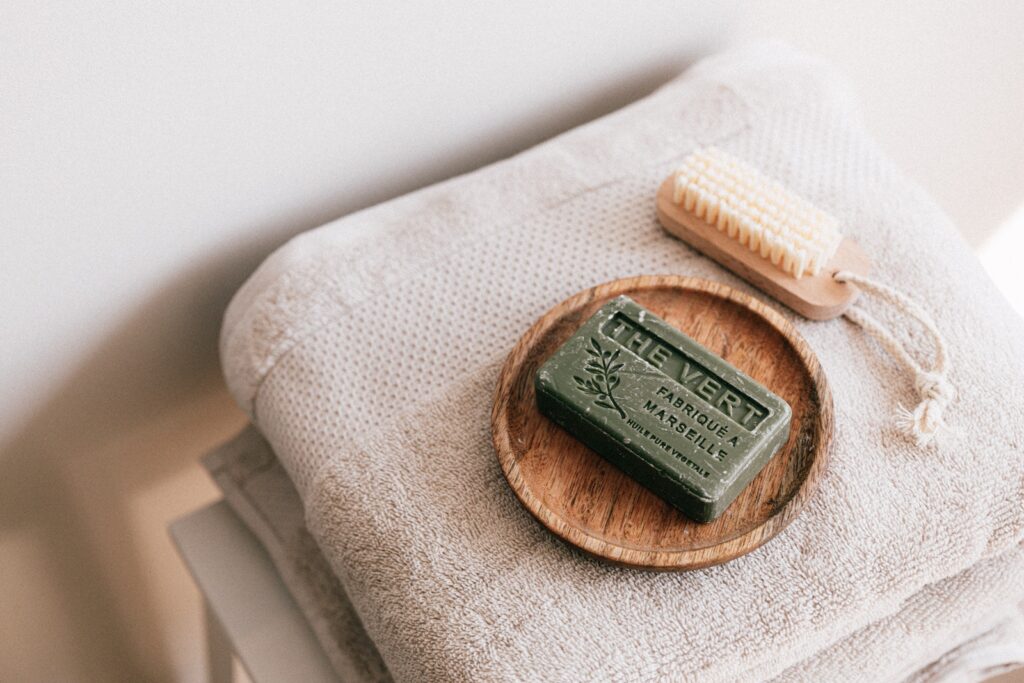
Why Sustainable Packaging is Important
Environmental Impact
Sustainable packaging is crucial for reducing the environmental impact of the skin care industry. Traditional packaging materials such as plastic and non-recyclable materials contribute to waste accumulation and pollution. These materials take centuries to decompose, releasing harmful chemicals into the environment during the process. By adopting sustainable packaging practices, the beauty industry can significantly reduce its carbon footprint and minimize the depletion of natural resources.
Consumer Demand
Consumer demand for sustainable packaging is on the rise. In recent years, more and more consumers have become aware of the environmental consequences of their purchasing decisions. They actively seek products with eco-friendly packaging, prioritizing brands that align with their values. By investing in sustainable packaging, skin care companies can attract and retain environmentally conscious consumers, gaining a competitive edge in the market.
Brand Reputation
Implementing sustainable packaging practices can enhance a brand’s reputation and foster customer loyalty. When companies prioritize the use of biodegradable materials, recycled packaging, and refillable containers, they demonstrate their commitment to environmental stewardship. This resonates with consumers who are increasingly looking for ethical and eco-friendly options. By positioning themselves as responsible and sustainable brands, skin care companies can establish a positive brand image and develop a loyal customer base.

Challenges in Sustainable Packaging
Limited Material Options
One of the main challenges in sustainable packaging is the limited availability of viable materials. Finding alternatives to conventional packaging materials that are both eco-friendly and cost-effective can be a significant hurdle. Companies need to invest in research and development to identify and test new materials that align with their sustainability goals while maintaining the necessary functionality and aesthetic appeal.
Cost Considerations
Sustainable packaging might require higher investments upfront compared to traditional packaging. New materials, production processes, and supply chains can demand additional costs. Balancing the need for eco-friendly packaging with financial feasibility can be a challenge for skin care brands, especially smaller ones. However, it is important to consider the long-term benefits and return on investment that sustainable packaging can offer, both in terms of consumer appeal and environmental impact.
Technical Constraints
Implementing sustainable packaging solutions can pose technical constraints for skin care companies. Packaging designs must ensure product stability, protect against contamination, and provide a satisfactory consumer experience. Finding sustainable alternatives that meet these requirements can be challenging. Skin care brands need to collaborate with packaging experts and invest in innovative technologies to overcome these constraints while adhering to their sustainability goals.

Innovations in Sustainable Packaging
Biodegradable Materials
Biodegradable materials are gaining traction in the skin care industry due to their ability to break down naturally and reduce waste accumulation. These materials, derived from renewable resources such as bamboo, sugarcane, and seaweed, offer an environmentally friendly alternative to conventional packaging. Biodegradable materials not only minimize the environmental impact but also provide aesthetic and functional versatility for skin care brands.
Recycled Packaging
Recycled packaging involves transforming post-consumer materials, such as plastics or paper, into new packaging products. By using recycled materials, skin care brands can significantly reduce their reliance on virgin resources and contribute to a circular economy. Recycled packaging can be as durable and visually appealing as conventional packaging, making it a viable and sustainable option for skin care companies.
Refillable Containers
Refillable containers offer a convenient and eco-friendly solution to reduce packaging waste. Instead of purchasing new containers for every product, consumers can refill their existing containers with product refills. This approach minimizes the need for excessive packaging materials, reduces energy consumption associated with manufacturing new containers, and encourages a more sustainable consumption pattern. Refillable containers have gained popularity in the skin care industry, allowing brands to offer sustainable options while providing a positive experience for consumers.
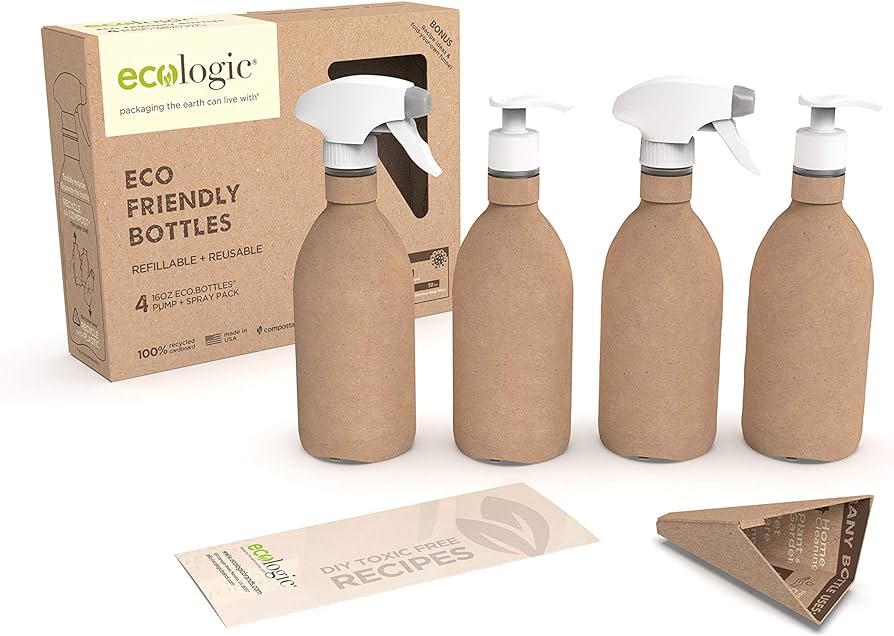
Biodegradable Materials in Skin Care Packaging
Benefits of Biodegradable Materials
Biodegradable materials offer numerous benefits for skin care packaging. Firstly, they break down naturally, reducing waste accumulation in landfills and oceans. This contributes to the preservation of natural resources and ecosystems. Additionally, biodegradable materials require fewer resources to produce compared to traditional packaging materials, reducing energy consumption and greenhouse gas emissions. Finally, using biodegradable materials in packaging aligns with the increasing consumer demand for sustainable and eco-friendly products, enhancing a brand’s reputation and attracting environmentally conscious consumers.
Examples of Biodegradable Materials
There are several biodegradable materials that can be used in skin care packaging. Bamboo is a sustainable alternative to plastic, offering durability and aesthetic appeal. Sugarcane-based materials provide a renewable option, as sugarcane can be cultivated quickly. Seaweed-based packaging materials are also gaining popularity due to their natural decomposition and abundance in marine ecosystems. By adopting these biodegradable materials, skin care companies can reduce their environmental impact while maintaining the necessary functionality and visual appeal of their packaging.
Challenges in Implementing Biodegradable Packaging
Although biodegradable packaging materials offer promise, there are challenges associated with their widespread implementation in the skin care industry. One of the main obstacles is the scalability of production. As demand for biodegradable materials increases, companies need to ensure a consistent and reliable supply chain to meet market needs.
Furthermore, there may be technical constraints in terms of product compatibility, as certain skin care formulations require specific packaging properties. Overcoming these challenges requires collaboration between packaging material suppliers, skin care companies, and industry experts to develop innovative solutions and ensure the successful implementation of biodegradable packaging.

Recycled Packaging in Skin Care
Advantages of Using Recycled Materials
Using recycled materials in skin care packaging offers various advantages. Firstly, it helps reduce the demand for virgin resources, such as petroleum-based plastics. By diverting post-consumer materials from landfills and incorporating them into packaging production, skin care companies contribute to waste reduction and energy conservation.
Additionally, recycled packaging often has a lower carbon footprint compared to conventional packaging, as the recycling process requires less energy than producing new materials. Furthermore, using recycled materials can enhance a brand’s reputation, attracting environmentally conscious consumers who value eco-friendly packaging.
Types of Recycled Packaging
There are various types of recycled packaging materials that can be utilized in the skin care industry. One common example is recycled plastic, which can be sourced from post-consumer or post-industrial waste and transformed into new packaging components. Recycled paper and cardboard are also widely used in skin care packaging, offering a sustainable alternative to virgin materials. Additionally, glass is an infinitely recyclable material that can be used in various forms of skin care packaging, providing durability and a premium aesthetic appeal.
Recycling Process in Skin Care Packaging
The recycling process for skin care packaging involves several stages. First, the post-consumer or post-industrial waste is collected and sorted based on material type. This waste is then cleaned, removing any contaminants that could hinder the recycling process. The materials are shredded or melted to be transformed into pellets or sheets, depending on the desired packaging format.
These recycled materials are then molded or shaped into new packaging components, ready for use. By incorporating the recycling process into their packaging supply chain, skin care companies can significantly contribute to waste reduction and environmental preservation.
Refillable Containers: An Eco-Friendly Option
Benefits of Refillable Containers
Refillable containers offer numerous benefits for both consumers and skin care companies. From a consumer perspective, refillable containers provide convenience and cost savings. Instead of purchasing a new container for each product, consumers can simply refill their existing containers, reducing packaging waste and clutter.
Refillable containers also give consumers a sense of value and involvement in sustainable practices, enhancing brand loyalty and customer satisfaction. From a business standpoint, refillable containers can reduce packaging costs and improve supply chain efficiency, as the focus shifts from producing new containers to providing refill options.
Implementation Challenges
Implementing a refillable container system in the skin care industry poses certain challenges. One of the main concerns is ensuring hygiene and product integrity throughout the refill process. Effective measures must be taken to prevent contamination and maintain product quality. Additionally, companies need to address the logistics of collecting and refilling containers, considering factors such as transportation and storage. Encouraging consumers to embrace the refillable concept and changing their consumption habits can also be a challenge that requires effective marketing and education strategies.
Successful Case Studies
Several skin care companies have successfully implemented refillable container systems, setting an example for the industry. One notable example is a prominent cosmetics brand that introduced a refillable lipstick container. The brand collaborated with packaging experts to develop a design that allowed consumers to purchase lipstick refills instead of a complete new tube. This initiative not only reduced packaging waste but also attracted positive attention from consumers and the media. Such successful case studies highlight the potential of refillable containers to create both environmental and business benefits in the skin care industry.

Designing for Sustainable Packaging
Consideration of Material Lifespan
Designing sustainable packaging involves considering the material lifespan to reduce waste and environmental impact. Skin care companies should assess the durability and recyclability of materials used in their packaging. Choosing materials that can withstand the product’s lifespan and be easily recycled or composted when disposed of is essential. By prioritizing materials with a longer lifespan, skin care companies can contribute to waste reduction and enhance the sustainability of their packaging.
Minimizing Packaging Waste
Minimizing packaging waste is a key aspect of sustainable packaging design. Skin care companies should aim to minimize the use of unnecessary packaging components, such as excessive layers, inserts, or decorations. Adopting minimalist design principles can not only reduce waste but also enhance the visual appeal of the packaging. Companies should also explore packaging options that use less material without compromising product protection and integrity. By minimizing packaging waste, skin care companies can reduce their environmental footprint and meet consumer expectations for eco-friendly packaging.
Product-to-Packaging Ratio
The product-to-packaging ratio is an important consideration in sustainable packaging design. Skin care companies should strive to optimize the amount of product relative to the packaging size. Reducing the size or weight of packaging components without compromising functionality and aesthetic appeal can lead to significant waste reduction. By maximizing the product-to-packaging ratio, skin care brands can minimize resource consumption, transportation costs, and waste generation throughout the product lifecycle.
Evaluating Eco-Friendly Claims
Understanding Greenwashing
Greenwashing refers to the misleading or exaggerated claims made by companies to appear more environmentally friendly than they actually are. In the context of sustainable packaging in skin care, it is crucial for consumers to be able to differentiate genuine eco-friendly practices from greenwashing. Skin care companies should provide transparency and evidence to support their sustainability claims, ensuring that their packaging materials and practices align with recognized environmental standards. By avoiding greenwashing, skin care companies can build trust with consumers and maintain their brand reputation.
Certifications and Labels
Certifications and labels play a vital role in evaluating the eco-friendliness of packaging. Skin care companies can obtain certifications such as the Forest Stewardship Council (FSC) certification for sustainable paper sourcing, or the Cradle to Cradle certification for recyclable and eco-friendly materials. Labels such as the Green Dot symbol or the Mobius Loop indicate the material’s recyclability. These certifications and labels serve as indicators of a brand’s commitment to sustainability, providing assurance to consumers that they are making environmentally responsible choices.
Transparency in Packaging
Transparency in packaging refers to providing clear and accurate information about the sustainability practices and materials used. Skin care companies should strive to communicate their packaging choices to consumers by including relevant details on the packaging itself or through product labeling. Clear and concise information about the materials, recycling options, and any sustainability certifications helps consumers make informed decisions and reinforces a brand’s commitment to sustainability. By being transparent, skin care companies can build credibility, foster trust, and strengthen their brand reputation among environmentally conscious consumers.
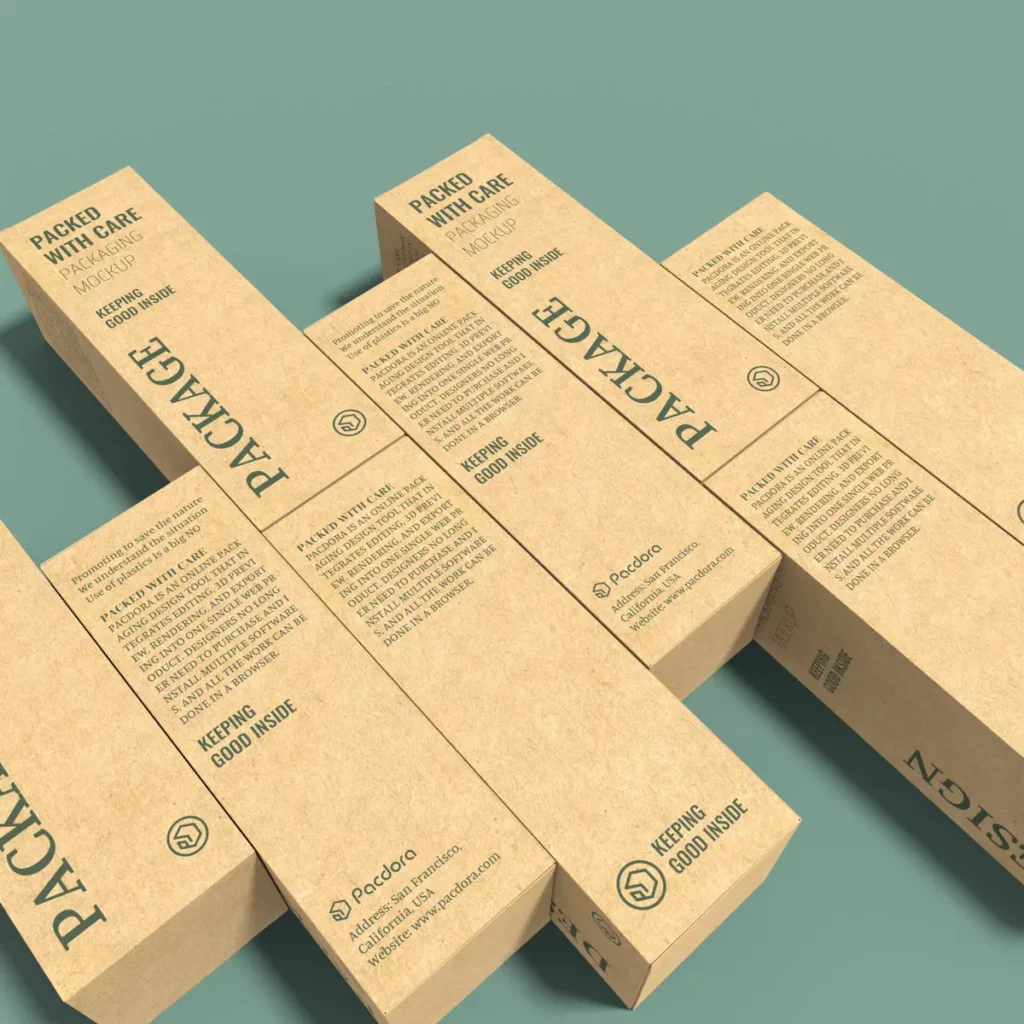
Consumer Education and Engagement
Educating the Importance of Sustainable Packaging
Consumer education plays a crucial role in promoting the importance of sustainable packaging in the skin care industry. Companies should take the initiative to educate consumers about the environmental impact of packaging waste and the benefits of choosing eco-friendly options. This can be done through various channels, such as informative product packaging, social media campaigns, or partnerships with sustainability organizations. By raising awareness and providing information, skin care companies can empower consumers to make more sustainable choices and drive demand for eco-friendly packaging.
Promoting Eco-Friendly Behaviors
In addition to educating consumers, skin care companies can actively promote eco-friendly behaviors related to packaging. Encouraging practices such as recycling, reusing packaging, or supporting refill programs can help create a culture of sustainability among consumers. Companies can provide clear instructions and guidance on how to properly dispose of or repurpose their packaging, making it easy for consumers to adopt eco-friendly habits. By actively promoting and facilitating sustainable behaviors, skin care companies can drive positive change and contribute to a greener future.
Incentives for Packaging Return or Reuse
To further engage consumers in sustainable packaging practices, skin care companies can offer incentives for packaging return or reuse. Implementing programs that reward customers for returning empty containers or participating in refill programs can encourage participation and build loyalty. Offering discounts, loyalty points, or even exclusive product access can incentivize consumers to actively contribute to packaging sustainability efforts. By providing tangible benefits for consumers’ eco-friendly actions, skin care companies can create a sense of partnership and shared responsibility in reducing packaging waste.
Collaborations and Industry Initiatives
Shared Responsibility and Collaboration
Addressing the challenges of sustainable packaging requires collaboration among different stakeholders in the skin care industry. Skin care companies, packaging manufacturers, suppliers, retailers, and regulatory bodies need to work together to develop and implement sustainable packaging solutions. Collaborative efforts can lead to innovation, knowledge sharing, and cost-sharing, making sustainable packaging more accessible and feasible for all industry players. By sharing responsibility and collaborating, the skin care industry can drive meaningful change towards more sustainable practices.
Global Industry Initiatives
There are various global industry initiatives focused on promoting sustainable packaging practices in the skin care industry. One notable example is the Sustainable Packaging Coalition, a membership-based organization that provides resources, tools, and educational materials to support companies in their packaging sustainability journey. The Ellen MacArthur Foundation’s New Plastics Economy initiative is another global effort that aims to promote circular economy principles and eliminate plastic waste. By participating in these initiatives, skin care companies can align themselves with global best practices and contribute to collective efforts in achieving a more sustainable future.
Prominent Industry Players
Several prominent skin care companies have taken significant steps in sustainable packaging, setting an example for the industry. L’Oréal, for instance, has committed to using 100% recycled or bio-based plastics in its packaging by 2030. Unilever has also made sustainability a priority, with initiatives such as its “Less, Better, No” approach to packaging, focusing on reducing, improving, and eliminating packaging where possible. These industry leaders demonstrate that sustainable packaging is not only achievable but also economically viable. By following their lead, other skin care companies can drive positive change and contribute to a greener future.
In conclusion, sustainable packaging in the skin care industry is of paramount importance due to its environmental impact, consumer demand, and brand reputation. Despite the challenges posed by limited material options, cost considerations, and technical constraints, innovative solutions such as biodegradable materials, recycled packaging, and refillable containers have emerged. Implementing sustainable packaging practices requires considering material lifespan, minimizing packaging waste, and optimizing the product-to-packaging ratio.
Evaluating eco-friendly claims, educating consumers, and fostering collaborations within the industry are crucial steps in promoting sustainable packaging. By embracing sustainable packaging practices, the skin care industry can lead the eco-friendly charge and contribute to a more environmentally conscious future.



